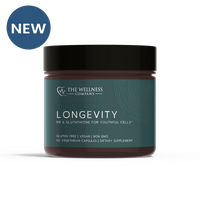Harnessing Vitamin D and Exercise for Peak Bone Health

Vitamin D is a steroid hormone. Steroid hormones are derived from cholesterol and are lipid-soluble molecules. Examples of steroid hormones include the sex hormones (androgens, estrogens, and progesterone) produced by male and female gonads, and hormones of the adrenal glands (aldosterone, cortisol, and androgens).
It is a fat-soluble vitamin that helps the body absorb and retain calcium and phosphorus. Both are necessary for building bone. Vitamin D also plays a role in bolstering the immune system to fight off viruses and bacteria.
In addition, vitamin D could play a role in reducing the symptoms of autoimmune disease. (1)

There are 2 forms of vitamin D
- Vitamin D2 (ergocalciferol)- The main source is from plants. Mushrooms, when exposed to UV light produce vitamin D2. Fortified cereals are usually fortified with vitamin D2.
- Vitamin D3 (cholecalciferol)- The main source is from animals, Sources of D3 are egg yolks, cod liver oil, fatty fish-salmon, sardines, herring, tuna, and beef liver. In addition, when skin is exposed to sunlight vitamin D3 is produced. The body only produces enough vitamin D3 from sunlight as it needs then stops producing it.
The liver, along with fat tissue stores excess vitamin D3, called calcitriol. The circulating vitamin D3 is converted by the kidneys to the active form of vitamin D. When blood calcium levels are low, PTH (parathyroid hormone) stimulates the production of active vitamin D (calcitriol) in the kidneys.
Once vitamin D(calcitriol) is activated, vitamin D binds to receptors in the intestines, bones, and kidneys. In the intestines, calcitriol supports the absorption of phosphorus and calcium in the diet. Calcitriol regulates phosphate and calcium in the kidneys and regulates calcium levels in bone. (2)
Risk factors for vitamin D deficiency
- Limited sunlight exposure and living at higher latitudes where there is less sunlight exposure.
- Older adults’ skin doesn’t absorb vitamin D as well as the younger population.
- Post-menopausal women due to decreased estrogen levels.
- Dark skin also doesn’t absorb vitamin D very well either.
- Some diseases are celiac, Crohn’s disease, and Ulcerative Colitis (since active vitamin D receptors are in the intestines, impaired intestinal lumen leads to decrease in vitamin D receptors).
- Obesity- vitamin D is stored in adipose tissue- obese people may need higher doses to achieve optimum levels.
- Gastric bypass patients may need more vitamin D
- Medications, such as anticonvulsants, glucocorticoids, anticonvulsants, and antiretrovirals- HIV medications)
- Low intake of vitamin D-rich foods such as fatty fish, eggs, etc. (3)
- Rickets in children
- Osteomalacia (soft bones) in adults
- Not sleeping well.
- Bone pain or achiness.
- Depression or feelings of sadness.
- Hair loss.
- Muscle weakness.
- Lowered immunity to infections-viral and bacterial
Signs of vitamin D toxicity
Vitamin D toxicity is not common, except when extremely high doses of vitamin D is taken in supplement form for a long time (months).
- Hypercalcemia (high amounts of circulating calcium in the blood)
- Nausea, vomiting
- Can progress to bone pain and kidney stones
- Muscle weakness
- Confusion or disorientation
- Bone loss (4)
Why take vitamin D with K2?
Role of K2
(Note: vitamin K2 is different from vitamin K1 (phylloquinone), which is primarily involved in blood clotting and is found in leafy green vegetables. Vitamin K2 has unique functions in the body, particularly in supporting bone and cardiovascular health).
Essentially the active form of vitamin D helps the body absorb calcium, by activating a protein called osteocalcin, which is produced by osteoblasts (cells responsible for bone formation), Osteocalcin binds calcium to the bone matrix, where it circulates in the bloodstream. Vitamin K2 directs the circulating calcium to the bones, where it can build up and strengthen the bone matrix. Without vitamin K2, you are at risk of excessive calcium buildup, leading to atherosclerosis, kidney stones, etc. (5)
Bone health and vitamin D
Several factors play significant roles in maintaining strong and healthy bones, including adequate vitamin D levels, regular exercise, and sufficient intake of vitamin K2.
Exercise, vitamin D, and bone health.
Vitamin D supports calcium absorption and bone mineralization, while exercise stimulates bone formation and increases bone density.
Weight-Bearing Exercise: Weight-bearing and resistance exercises, such as walking, jogging, and weightlifting, help stimulate bone formation and increase bone density.
Mechanical Stress: Exercise puts mechanical stress on the bones, which stimulates bone remodeling and strengthens the bones over time.
Balance and Coordination: Exercises that improve balance and coordination can help reduce the risk of falls and fractures, especially in older adults.
Reduced Risk of Falls: Exercise, combined with sufficient vitamin D levels, can help improve muscle strength and balance, reducing the risk of falls and fractures. (6)
How to Improve Your Vitamin D Status
In addition to adequate sunlight exposure, vitamin D requires other nutrients and minerals to work properly. It is always best to get your nutrition from food sources, however long winters and low sunlight may require supplementation. If supplementing with vitamin D, it is best to take it with fat since it is a fat-soluble vitamin.
Vitamin K2 (MK-7)- Food sources include fermented foods and natto.
Magnesium- Helps convert vitamin D to an active form. Food sources include leafy greens, beans, legumes, almonds, and cashews.
Zinc- synergistic effect- vitamin D enhances zinc action and homeostasis, and zinc enhances vitamin D absorption. Food sources include oysters, red meat, and poultry.
Boron- increases vitamin D in the blood. Food sources include coffee, milk, apples, dried and cooked beans, and potatoes. (7)
If you’re deficient or need an extra dose of vitamin D, check out our Strong Bones Formula.
Citations
- Cutolo, M., Paolino, S., Sulli, A., Smith, V., Pizzorni, C., & Seriolo, B. (2014). Vitamin D, steroid hormones, and autoimmunity. Annals of the New York Academy of Sciences, 1317, 39–46. https://doi.org/10.1111/nyas.12432
- Institute of Medicine (US) Committee to Review Dietary Reference Intakes for Vitamin D and Calcium; Ross AC, Taylor CL, Yaktine AL, et al., editors. "Dietary Reference Intakes for Calcium and Vitamin D." Washington (DC): National Academies Press (US); 2011.
- Holick MF. Vitamin D deficiency. N Engl J Med. 2007 Jul 19;357(3):266-81. doi: 10.1056/NEJMra070553. PMID: 17634462.
- Institute of Medicine (US) Committee to Review Dietary Reference Intakes for Vitamin D and Calcium; Ross AC, Taylor CL, Yaktine AL, et al., editors. "Dietary Reference Intakes for Calcium and Vitamin D." Washington (DC): National Academies Press (US); 2011
- Maresz K. "Proper calcium use: vitamin K2 as a promoter of bone and cardiovascular health." Integr Med (Encinitas). 2015;14(1):34-9
- Weaver CM, et al. "Vitamin D, calcium, and fracture risk in children." J Bone Miner Res. 2005;20(4):416-24
- Institute of Medicine (US) Committee to Review Dietary Reference Intakes for Vitamin D and Calcium; Ross AC, Taylor CL, Yaktine AL, et al., editors. "Dietary Reference Intakes for Calcium and Vitamin D." Washington (DC): National Academies Press (US); 2011.














